Today we will be checking out the Berlin Series Main Collections bundle. This new SINE release by Orchestral Tools includes the company’s four highly-praised flagship libraries optimized for their custom SINE sample engine: Berlin Strings, Berlin Brass, Berlin Woodwinds, and Berlin Percussion.
With this new SINE port, Orchestral Tools advertises a complete polishing of the existing samples and the addition of a new ff (fortissimo) layer to Berlin Brass, to make it more versatile for composers.
So, how are these classic libraries holding up nowadays? Which improvements does the port to Orchestral Tools SINE Player bring to the table? We will find out today!
Orchestral Tools kindly provided us with a review copy of the Berlin Series bundle.
OVERVIEW
Berlin Strings features 8 first violins, 6 second violins, 5 violas, 5 celli, and 4 double basses. It also offers a full ensemble patch. The Berlin Brass library includes 4 individual horns, 3 individual C-trumpets, 2 tenor trombones, and a solo bass trombone, along with their respective ensembles, as well as a solo F-tuba.
Berlin Woodwinds includes 5 individual flutes (including piccolo & alto), 2 oboes, 1 English horn, 2 clarinets, and 2 bassoons. The Berlin percussion library now includes the Berlin Timpani standalone library which comes with a lot of different recorded techniques. It also features several types and sizes of drums, including snare drums, bass drums, toms, roto toms, timbales, bongos, and congas.
It also features tuned instruments like mallets, celesta, vibraphone, marimba, xylophone, crotales, glockenspiel, tubular bells, and cowbells. Unpitched instruments are also included, such as cymbals (including rolls), tam-tams, triangles, and chimes among others.
Each of these libraries includes a great number of articulations, covering several types of long, short, and dynamic playing techniques where relevant. All instrument sections have been recorded in situ (at their respective place in a symphonic orchestral setup) at the Teldex Scoring Stage Berlin. Also, each instrument was captured with 5 to 7 microphone positions.
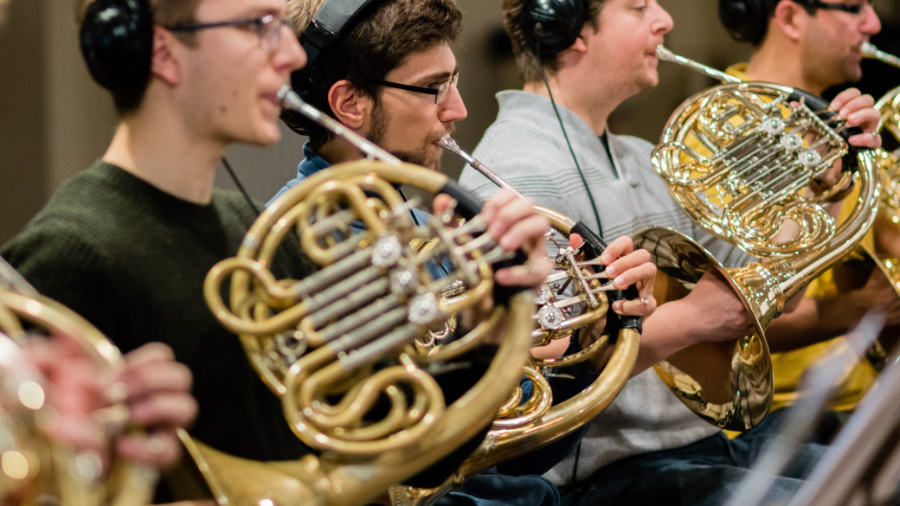
The full orchestra including all four libraries amounts to just short of a terabyte of samples (390 GB compressed with the SINEarc technology). Individually, Berlin Strings includes 229 GB of samples (102 GB compressed), Berlin Brass includes 387 GB of samples (155 GB compressed), Berlin Woodwinds includes 187 GB (54 GB compressed), and Berlin Percussion includes 195 GB of samples (79 GB compressed). The samples are provided in the usual 24bit/48kHz format, which is pretty much industry standard for sample libraries nowadays.
The installation process is very straightforward. You just need to log in to SINE, browse through your purchased collections under “My Licenses” and find the Berlin Series sample libraries there. Now you can choose to download everything or select which instruments and microphone positions you want to install. A shortcut corresponding to a standard set of microphones is also present which is particularly useful for users who have bought whole instrument families and want to be set up quickly. Once this selection has been made it is then possible to monitor the installation progress under the “Downloads” tab.

ARTICULATIONS & SOUND
The Berlin Series libraries were designed to allow composers to write agile, emotional, and authentic orchestral scores. One of the collection’s main strengths is its huge number of available articulations.
Berlin Strings
Most of the long articulations of Berlin Strings are recorded in 2 to 4 dynamic layers, even some of the more specialized techniques. The string tremolos, for example, have also been captured at a super soft ppp (pianississimo) dynamic.
Berlin Strings has a lot to offer there actually, between its dynamics and swells, and its more delicate and beautifully recorded soft textures. It offers samples that can be used effectively in melodic contexts, as well as more textural contemporary works. The instruments generally have a well-matching set of articulations, making doubling and divisi-writing quite easy.
Several legato types are offered for more realistic scoring: you can choose between a subtle slurred legato, a soaring portamento, and a quick runs legato. As a leading section, the first violins also feature a fingered legato. It would have been great to get the same for the rest of the string family, too, but it is nevertheless a good addition to add some authentic details to our orchestral mockups. I will address the legatos again in the next chapter.
Berlin Woodwinds
Berlin Woodwinds also features delicate and detailed wind textures. Beyond this, a good number of shorts and performed repetitions are also available for more dynamic and rhythmic uses. Articulation matching across the different instruments is good, although I was puzzled to find that the piccolo flute and flute 1 do not feature a sustain with a soft attack, while the other instruments all include it.
Luckily, the library is built around individual players, which makes it possible to temporarily borrow an articulation from flute player 2 or 3 to make up for the missing articulation. The majority of first-desk players for each instrument offers a choice between a vibrato and non-vibrato playing style which is switchable by CC3 (same as for the strings).
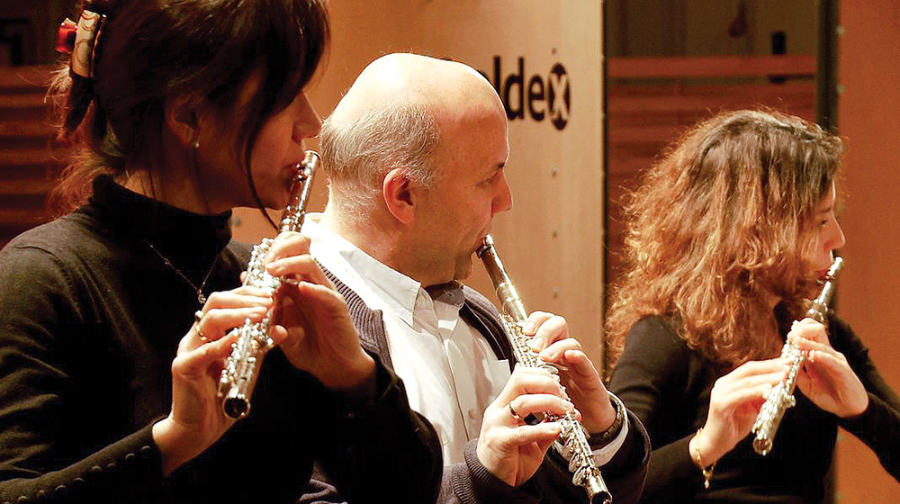
Berlin Brass
In the past, Berlin Brass has always been praised for its beautiful and noble tone, and the library now also benefits from getting a new ff (fortissimo) dynamic layer. The difference that this ff layer makes is very noticeable, and the new tone associated with it helps the brass instruments to cut through a mix in busy arrangements. This new layer now definitely makes the library more versatile in various orchestral contexts.
The shorts in all these instrument families have been sampled over several dynamic layers and include a good selection of round robins, ranging from 5 to more than 20. Performed repetitions are also included across the range of instruments, featuring 8th, 16th, or triplets. These repetitions are somewhat similar to what can be found in Orchestral Tools’ more recent “Time” libraries and work very well for rhythmic arrangement.
Berlin Percussion
One of the main strengths of Berlin Percussion is its extensive collection of instruments which allows for some nice contrast with a good mix of high- and low-end instruments. The main orchestral drums sound tight and clean and provide significant low-end detail where appropriate.
The tuned percussion includes some lovely sounding celesta, marimba, and glockenspiel. The library also includes some interesting body percussion, which is made of foot stomps, hand claps, and finger clicks.
The majority of the percussion instruments feature a good number of round robins, although there could be some more for the softer-sounding ones.
MICROPHONES
Depending on the instrument section, the Berlin Series libraries feature 5 to 7 different microphone positions. The usual selection of a Spot/Close, a Decca Tree, and a wide AB position offers a great mixing range to get a sense of the popular Teldex scoring stage. It also makes the library compatible with the rest of the Orchestral Tools product range.
The Leader and Spot mics are superb options for adding focus and detail. And as with all Orchestral Tools releases, I am personally quite fond of adding a bit of the AB mics to the mix for some lush, authentic reverb tail. This is also the configuration I used in my orchestral demo mockup below. Moreover, the woodwinds feature some more spot mics for an added sense of intimacy while the strings rely more on Tree and AB mics to get their lush character.
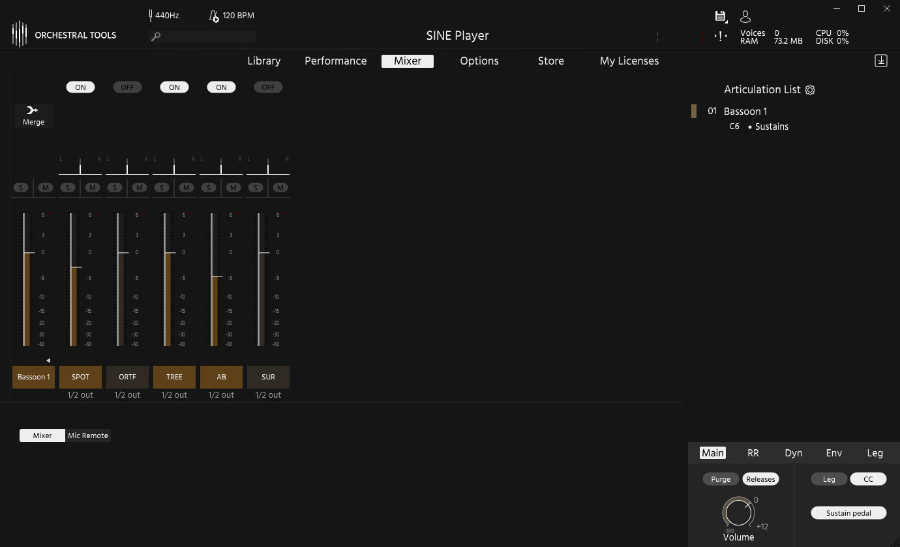
DEMO MOCKUP
For the purpose of this review, I created an orchestral mockup of the track “Souls Don’t Die” from Michael Kamen’s famous Iron Giant score. I focused on showcasing the softer and more emotional capacities of the four libraries since there are already quite a few examples of powerful, vivid mockups out there.
The mockup features all four of the Berlin Series libraries (the harp is from OT’s Berlin Berklee Orchestra library). I’ve made extensive use of the instrument’s modulation and expression control features across all sections in order to generate a more dynamic and authentic feel. I also added tempo automation, a TC Electronic VSS3 reverb (for a larger reverb tail only), and a limiter on the master bus:
The size of the string sections in Berlin Strings is slightly smaller than on the original score, which makes this mockup sound slightly more intimate. Berlin Strings does indeed sound very detailed here, but thanks to its numerous delicate articulations and soft layers, it has the capability to sound broad and lush, too.
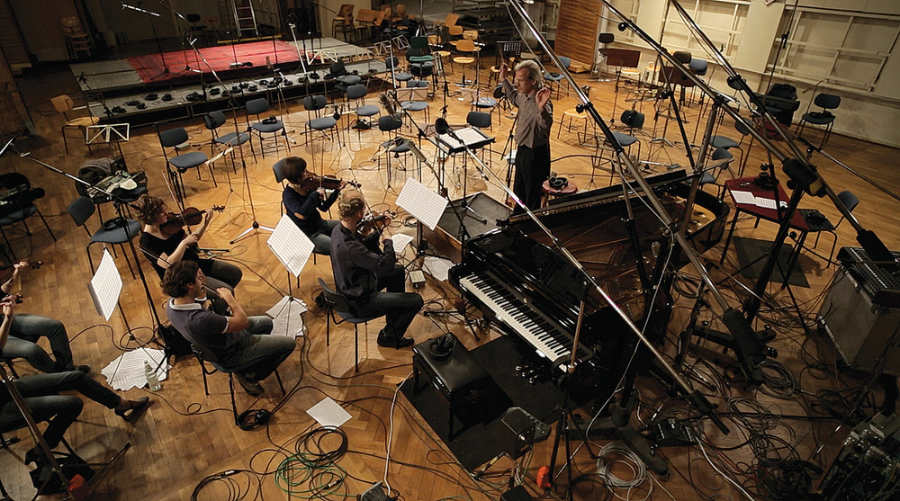
SINE PLAYER CONVERSION
One of the major differences between the series’ old Kontakt format and the new SINE format is that through SINE, composers now have the ability to buy any instrument of a library individually. This is a huge advantage for users who like to fill out their orchestral palette over time.
Needless to say, the standard functions of the SINE Player work with all Berlin Series libraries. Out of these, some of the most notable ones include the possibility of applying legato transitions to almost any articulation or morphing two different articulations together by using SINE’s trademark polyswitching function.
PROBLEMS / SUGGESTIONS
Having talked about the great tone and sound of these libraries, I nevertheless noticed that some aspects of the SINE port could still benefit from a bit of fine-tuning to add more flexibility. This is especially true when it comes to handling such deeply sampled libraries like the Berlin Series collection, compared to the previous SINE releases. Orchestral Tools has confirmed they will continue to work on additional fixes for these libraries, so please consider the following paragraphs as a wishlist of fixes and additional functionality.
Shortly after release, Orchestral Tools released a bugfix patch which corrected some of the legato transitions in the brass instruments. While this patch has been very effective for Berlin Brass, we still noticed that some transitions – mostly in the strings and woodwinds families – sound a bit choppy and abrupt. SINE already lets us adjust the overall volume of legato transitions for a given instrument – which is great – however, implementing a way to make the legato volume assignable to a CC or even let users adjust the length of the legato transition would help a lot in shaping an even more organic performance in orchestral mockups.
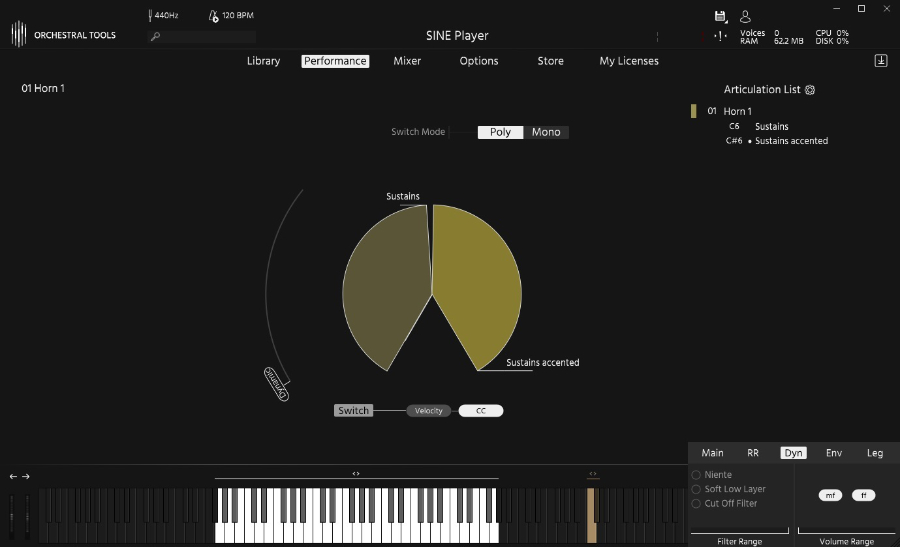
If you listen closely, this issue is actually noticeable in my mockup presented above, around the 1-minute mark. Implementing a way to let users adjust the length of the legato transition, and make the legato volume assignable to a CC would help a lot.
Orchestral Tools also chose to split articulations for Berlin Strings into groups of playing techniques which is probably due to the enormous amount of articulations available. This is the equivalent of grouping articulations to a given patch in Kontakt, and that is fine in itself.
Articulations seem to have been grouped by frequency of use rather than type tough: common longs and shorts are grouped together, whereas long “extended technique” articulations such as tremolos and trills are part of a separate group. On paper, this seems reasonable and seems to indicate Orchestral Tools’ preference towards using different MIDI channels. But for users keen on using only key switching exclusively over a single MIDI channel, this means that there is currently no possibility to use key switches to go from – let’s say – a simple normale sustain to a tremolo. One way to circumvent this is to use expression maps using different MIDI channels of course. However, with SINE being a new engine, I feel this seemingly simple function could technically be possible to implement and would add a lot of flexibility, especially in regards to polyswitching.
The polyswitching function, while being a great tool to shape realistic mockups, suffers from the same issue when using Berlin Strings. It is not possible to create a polymap between articulations from different groups or from different MIDI channels. With the instrument grouping choice mentioned earlier, it simply makes some polymaps impossible to create – at least currently. Taking the same example, our team hasn’t found a way to set up a polywitch including sustains and another extended long articulation (tremolo for example), which is a curious omission. This seems like a big missed opportunity for such a detailed library and would be so useful for orchestral works.
Berlin Percussion, while having a great sound, also sometimes suffers from questionable key assignments. While the Timpani works well on that front given how deeply it was sampled, choices made for a few other drums are more debatable. For example, the bass drums have key switches even though each articulation is assigned to a different part of the keyboard, making the key switch a bit redundant. Maybe Orchestral Tools could consider an additional all-in-one patch for these instruments, to make live-playing a bit easier.
As another positive note, in addition to the previously mentioned purchase and download options, SINE also brings the added benefit from sample compression. Therefore, the ported Berlin Series instruments for SINE take up fewer ressources than their Kontakt equivalents. In practice, the performed repetition patches also work better over time than their previous Kontakt implementations, which sometimes were falling out of sync with the DAW’s tempo.
CONCLUSION
Me – and surely a whole community of media composers – are happy to see that Orchestral Tools finally converted their flagship libraries to their custom SINE format. Given that the Berlin Series Main Collection is still one of the most deeply sampled sets of commercially available libraries today, has a great tone and a huge number of playing techniques, the four main Berlin Series libraries still represent a state-of-the-art virtual orchestra.
Through SINE Player’s many performance options and controls as well as Berlin Brass’s new, louder dynamic layer, the Berlin Series becomes much more versatile and an even better tool to create both agile and lush arrangements with ease. This, together with a competitive price makes the Berlin Series Main Collection an attractive option for anyone looking to acquire a complete orchestral sample library.
The fact that all the different orchestral instruments are also offered individually, represents another huge advantage in terms of purchasing options. While the SINE conversion was undeniably successful, it could benefit from a few adjustments and some added flexibility. This is most notable for some of the string section’s legato transitions and the choice of instrument groupings. We’re definitely looking forward to Orchestral Tools’ further development on this front.
Pros
- Complete symphonic orchestra recorded on a great-sounding scoring stage
- One of the most deeply sampled virtual orchestras available today
- Beautiful tone
- Huge variety of orchestral articulations
- Versatile array of microphone positions
Cons
- Some legato transitions feel a bit ”snapped”
- SINE could benefit from a couple of technical improvements to handle such deeply sampled libraries
The Berlin Series Main Collection by Orchestral Tools is available as a download for €1,899. The four libraries, if purchased individually, would amount to a total price of €2,787.


0 comments on “Orchestral Tools – Berlin Series Bundle (Review)”